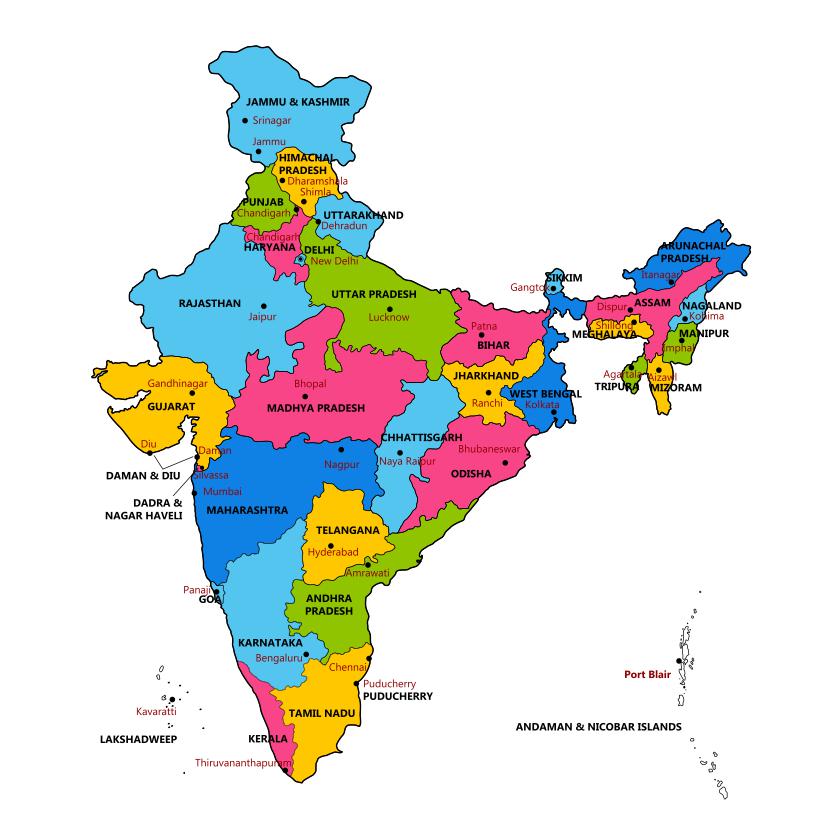
eCommerce – India’s Fastest Growing Commercial Industry
eCommerce has rapidly come to be recognized as India’s fastest growing commercial industry. With a 51% annual growth rate in revenues, the highest in the world, industry sales are expected to reach $62.3 billion by 2023.
For cross-border sellers, expanding into India is an excellent opportunity to tap into a still developing market, where shopping habits, product preferences and marketplaces are constantly changing. India has a population of over 1.3 billion, and internet and smartphone penetration is rapidly growing, making it imperative to keep your fingers on the pulse of Indian eCommerce to remain profitable.
To give you an idea of how you can best adapt your business to the Indian market, we’ll be taking a deep-dive into the shopping trends that shape the country’s eCommerce industry.
Indian eCommerce Statistics and Shopping Trends
Currently, eCommerce penetration in India is 47.9% and is expected to reach 64.8% (920 million people) by 2023, indicating the massive room for growth in the industry. Due to India’s geography and diverse population, however, these shoppers have a wide variety of preferences when purchasing online.
Payment Preferences
When it comes to payment preferences for Indian shoppers, statistics vary. The most prevalent methods include credit/debit cards, prepaid cards, bank transfer, digital wallets, such as OxiCash, and cash on delivery (COD).
While COD has long been the most popular payment method among Indian shoppers, the tide appears to be rapidly turning towards debit and prepaid cards. The prevalence of cash payments is largely due to a distrust of online money transfers and a lack of fraud prevention and other digital security measures. This trend is expected to change as programs, such as the Unified Payment Interface (UPI) by the Reserve Bank of India, enables shoppers to make electronic payments securely.
Regardless of these changes, you should still be prepared to except COD payments, which are still frequently used, as well as all other popular payment methods while operating in India.
Shopping Preferences


Most Indian users prefer desktop to mobile when shopping online. That said, just like everything else in Indian eCommerce, that trend is changing. Smartphone penetration is expected to hit 829 million by 2021 and there is a clear shift towards cross-device purchasing. To cover all your bases and reach as many users as possible, optimize your store for mobile.
Product Categories
When it comes to choosing a product line for your Indian store, the following categories give you an idea of what’s popular among local shoppers and the areas in which you’re most likely to succeed.
- Apparel
- Electronics
- Footwear
- Food, health & beauty supplements
- Jewelry
- Mobile phones
- Fashion accessories
- Home decor
- Kitchen ware and household appliances
Language


Before opening your store, remember that India is a huge country with 22 official languages. To reach as many shoppers as possible, it pays to invest in translating your store. The top-5 most spoken languages in India are:
- Hindi
- English
- Bengali
- Telugu
- Marathi
Top eCommerce Marketplaces in India
Amazon dramatically altered the eCommerce landscape when it came to India in 2012. There are many popular online marketplaces in India, however, and it pays to explore each one before deciding where to open your store. The top-10 online stores in India according to eCommerce sales are:
- Amazon.in
- Flipkart.com
- Myntra.com
- Jabong.com
- Snapdeal.com
- Ebay.in
- Paytmmall.com
- Firstcry.com
- Shopclues.com
Indian Shopping Holidays


There are festivals throughout the year in India, and many of them are a popular time for shopping. The following are the top-5 shopping holidays. Remember that dates for these festivals change from year to year, so be sure to plan accordingly.
- New Year’s
- Sankranti/Pongal/Lohri
- Raksha Bandhan
- Durga Puja/Navratri/Dussehra
- Diwali
- Christmas
For a roundup of all of this year’s global holidays, check out our 2020 eCommerce Calendar.
Bottom Line
For cross-border sellers, India is a great opportunity to tap into a rapidly developing market while expanding your customer base. Doing so requires a fair amount of preparation, including adapting how you process orders, adjusting your inventory, translating your store accordingly, strategically opening your store on popular marketplaces and paying attention to local shopping holidays. This will help ensure your business’s continued presence in one of the leading countries for global eCommerce.
Growing Your Business in India with Payoneer
While selling into India has the potential to greatly expand your business, taking advantage of this opportunity requires you to overcome some regulatory hurdles, and that’s where Payoneer comes in.
As the only scalable solution to facilitate selling into India, Payoneer has partnered with Indian marketplaces, banks and importers to bring international sellers an end-to-end payments solution. Furthermore, Payoneer can manage fraud risks and payment blockage scenarios, all while remaining fully compliant with Indian regulations, to ensure that your payments are safely processed straight to your Payoneer account.




